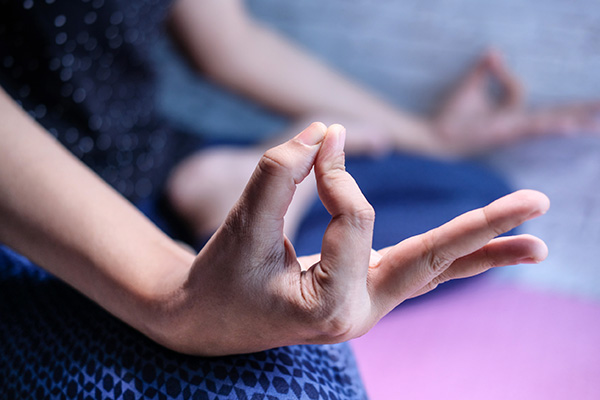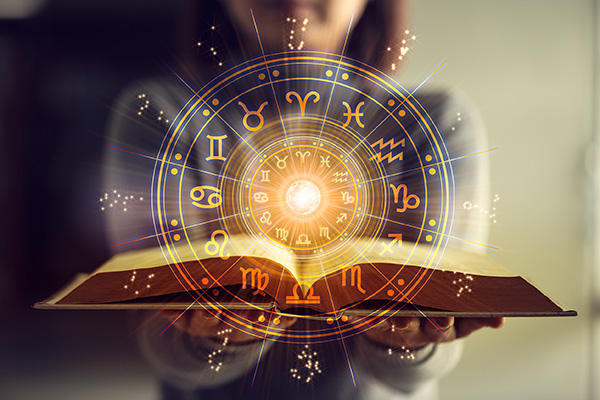 Have you ever contemplated why certain individuals position their fingers in unexpected ways during meditation?
Have you ever contemplated why certain individuals position their fingers in unexpected ways during meditation?
These sacred hand positions, referred to as mudras, serve a purpose beyond mere aesthetics—they embody a potent energetic practice that has its roots in ancient spiritual customs. They are deliberate postures crafted to direct energy, concentrate the mind, and enhance spiritual engagement.
Mudras play a vital role in numerous spiritual traditions, particularly Kundalini Yoga—an age-old energetic healing practice—and extend to Hinduism, Buddhism, Jainism, classical Indian dance, and yogic methodologies.
Their origins can be traced to the Vedas, the earliest sacred texts of Hinduism, where mudras were utilized in ceremonies to invoke divine favors and spiritual potency.
Throughout the ages, these gestures have transformed into vital instruments within yoga, tantra, and meditation practices. Their aim is to assist practitioners in directing subtle energies, heightening awareness, and resonating with elevated consciousness.
In Sanskrit, mudra translates to “seal,” “sign,” or “gesture.” More than simple physical stances, these gestures forge a connection among body, mind, and spirit, constructing an energetic circuit that engages directly with our auric field. Each mudra serves as a nuanced energetic signal—each finger arrangement resonates with specific astrological aspects, emotional states, and elemental energies.
While some mudras incorporate the entire body, the majority are executed with the hands and fingers. Their impact is both significant and functional, enhancing spiritual endeavors, aiding healing, and facilitating the movement of life-force energy (prana or chi) throughout the body.
In yoga, mudras manifest as a form of non-verbal expression—an ‘external representation of internal determination’ ~ Kirsty Tomlinson
In Hinduism, mudras are customarily employed in worship, meditation, and rituals as instruments to connect with the divine. Each gesture carries significance and purpose. For instance, the Gyan Mudra, formed by joining the index finger to the thumb, is recognized as the “seal of knowledge,” enhancing memory, wisdom, and spiritual insight.
In Buddhism, mudras are foundational to meditation and iconography, often depicted in representations of the Buddha. Each hand gesture symbolizes a spiritual teaching, principle, or quality. The Abhaya Mudra, for instance, characterized by the right hand raised with the palm facing outward, signifies fearlessness, protection, and serenity.
In Jainism, mudras are utilized in prayer and contemplation to foster non-violence, inner tranquility, and self-realization. A well-known example is the Anjali Mudra, where the palms meet at the heart center—a universal symbol of reverence, gratitude, and divine connection.
In Hatha Yoga, mudras are frequently practiced alongside breathwork (pranayama) and meditation to guide prana and stimulate energy centers (chakras). By aligning hand positions with focused breath and intention, the practitioner weaves a potent triad of purpose, vibration, and stillness—unlocking profound awareness and healing states.
In Kundalini Yoga, the hands are regarded as energetic maps reflecting the entire body. Each section of the hand corresponds to distinct areas of the brain and nervous system. By forming mudras through the touching of certain fingers, we activate energetic pathways, aligning with universal forces.
Interestingly, mudras transcend the yogic tradition. Hand gestures have been present in every culture throughout human history. From the sacred hand configurations seen in Hindu and Buddhist art to the practical signs of modern sign language or military salutes, these symbolic movements convey power, intent, and communication. Some gestures elevate, heal, and connect us, while others—like an irate middle finger—can embody emotional discord and separation.
Mudras are rooted in the Ayurvedic principle of balancing the five elements to foster overall health. Ayurveda asserts that imbalances in these elements can lead to both physical and mental disruptions.
Experiment with various mudras and observe their impact on your body and mind. Individual reactions vary, making personal experience vital ~ Jack Utermoehl
Most mudras entail specific finger placements that influence energy flow and various aspects of the body and mind. Engaging in mudras aids in restoring equilibrium and encouraging health within the mind-body framework. To fully harness the benefits of mudras, it’s essential to comprehend their symbolism. Each finger symbolizes an element:
Thumb – Fire (Agni)
Index finger – Air (Vayu)
Middle finger – Space (Akasha)
Ring finger – Earth (Prithvi)
Little finger – Water (Jala)
To create each mudra, a specific finger is brought together with the thumb. This symbolic act harmonizes the energy of that finger with the self, transforming and uplifting the individual. Here is an introductory selection of mudras to incorporate into your meditation, breathwork, or energy healing routine:
Gyan Mudra: The Seal Of Knowledge
Linking the thumb and index finger to enhance focus and wisdom. It is one of the most prevalent mudras in meditation, calming the mind and intensifying the connection to inner wisdom. Practicing Gyan Mudra boosts concentration, mental clarity, and receptiveness to higher guidance. It’s ideal for students, spiritual seekers, or anyone facing decisions.
Employ this mudra while meditating, studying, or seeking solutions to a problem. It quiets mental noise and aligns the ego with divine intelligence.
Chin Mudra: The Seal Of Consciousness
Similar to Gyan Mudra, this gesture joins the thumb and index finger, but with the palms facing upward. It symbolizes unity between the individual and the cosmos, promoting alertness and inner awareness.
Utilize this mudra during seated meditation to maintain a gentle connection with divine consciousness while remaining open and attuned to inner truths.
Vayu Mudra: The Seal Of Air
The index finger is bent to touch the thumb’s base, which gently presses it down. This mudra balances the air element within the body, alleviating restlessness, anxiety, and joint discomfort.
Use this mudra when experiencing nervousness, unease, or gas-related issues. It calms the nervous system, fostering tranquility.
Shunya Mudra: The Seal Of Emptiness
The middle finger is folded to touch the base of the thumb and is held under gentle thumb pressure. It is thought to enhance hearing and balance the space element in the body.
Utilize this mudra to alleviate earaches, auditory issues, or dizziness. It fosters inner stillness and openness to subtle energies.
Prithvi Mudra: The Seal Of Earth
Press the tip of the ring finger against the thumb, with the other fingers extended. This mudra encourages grounding, strength, and physical stability. It enhances vitality and assists in tissue regeneration.
Employ this mudra when feeling weak, unstable, or disconnected. It’s particularly advantageous for fostering resilience and caring for the physical body.
Varuna Mudra: The Seal Of Water
Connect the tip of the little finger to the tip of the thumb while keeping the other fingers straight. This mudra helps sustain fluid balance in the body and supports emotional harmonization.
Use this mudra to address dry skin, dehydration, or mood fluctuations. It evokes flowing, compassionate energy and enhances emotional expression.
Prana Mudra: The Seal Of Life Force
Join the tips of the ring and little fingers with the thumb, keeping the other fingers extended. This potent mudra stimulates the root chakra and awakens dormant energy.
Employ this mudra to enhance vitality, boost the immune system, and energize the body. It’s particularly helpful during illness or fatigue, promoting overall health.
Apana Mudra: The Seal Of Elimination
Touch the tips of the middle and ring fingers to the thumb, with the other fingers extended. This mudra activates the body’s detoxification mechanisms and supports elimination.
Utilize this mudra for digestive issues, menstrual discomfort, or for emotional or physical detoxification. It purifies both body and mind.
Surya Mudra: The Seal Of The Sun
Fold the ring finger at the thumb’s base and press down gently. This mudra ignites the internal fire, enhancing metabolism, digestion, and warmth.
Employ this mudra to boost metabolism, aid weight loss, and dispel lethargy. It energizes the solar plexus and stimulates personal power.
Kubera Mudra: The Seal Of Manifestation
Bring the tips of the thumb, index, and middle fingers together, folding the ring and little fingers into the palm. This mudra channels energy and intention towards manifestation.
Utilize this mudra when setting goals, visualizing success, or inviting abundance. It channels determination, clarity, and confidence into purposeful action.
Imbalances in any combination of elements over time may manifest as health issues. Daily practice of mudras helps maintain balance among the doshas and fosters clarity and tranquility ~ Ruchira Roy Chowdhury
The beauty of mudras lies in their simplicity. They can be utilized at any moment—during meditation, while walking in nature, sitting on a train, or even while resting in bed. They do not necessitate any tools or intricate postures. All they demand is conscious intent and presence.
When paired with meditation, breath practices, or mantra, mudras amplify energetic effects. The more regularly you engage in practice, the more you will perceive subtle shifts in your energy field, emotions, and mental state. They assist in reprogramming your nervous system, unlocking inner guidance, and transforming reactionary patterns into calm awareness.
In the contemporary digital landscape that often draws us outward, mudras serve as a gentle invitation to turn inward. They remind us that our hands are not merely for action but also for presence—that within our palms resides the capacity to transform, heal, and connect with the divine.
Thus, the next time you spot a practitioner whose fingers intertwine in a silent gesture, recognize that something profound is unfolding: a quiet dialogue between the soul and the source.
|
 About The Author: Satya About The Author: Satya
Satya resides in Northern California and is a natural Clairvoyant, Empath, Conduit, educator, author, animal enthusiast, healer, Reiki Master, and advanced yoga instructor. She has provided essential psychic support to celebrities, athletes, and many others. A multi-faceted Intuitive, with numerous unique abilities, she can offer insights into the past as well as a pathway to a brighter future. Through her long-distance energy work, she extends healing to both people and animals! She quickly identifies karmic connections from previous lives that influence current circumstances, assisting clients in navigating through them rapidly. For reliable solutions to nearly any pressing issue, you can find Satya at PsychicAccess.com.
|
Mudras, or hand gestures, have been employed for centuries in a variety of spiritual and healing traditions to link the mind, body, and spirit. These gestures are considered to activate various areas of the brain and body, aiding in balancing energy and fostering overall health.
In numerous Eastern practices, such as yoga and Ayurveda, mudras are recognized as a potent means for self-healing and spiritual development. Each finger signifies a different element and energy, and by assembling them in specific configurations, practitioners can cultivate energy flow within the body.
A widely recognized mudra is the Gyan mudra, where the thumb meets the index finger while the others remain extended. This mudra is thought to enhance focus, boost memory, and foster wisdom. By incorporating this mudra into regular practice, one can fortify the bond between the mind and body, resulting in a more balanced and harmonious existence.
Another favored mudra is the Anjali mudra, where palms are pressed together in front of the heart. Often utilized in meditation and prayer, this gesture fosters gratitude and a connection to the divine. Bringing the hands together in such a manner promotes unity among the mind, body, and spirit.
Mudras may also be leveraged to ease physical discomfort and encourage healing. For instance, the Prana mudra, which involves pressing the ring and little fingers against the thumb, is believed to enhance vitality and fortify the immune system. Regular practice of this mudra can strengthen the body’s innate healing capabilities and support overall health.
In addition to physical and spiritual benefits, mudras can aid in soothing the mind and alleviating stress. By concentrating on the hand movements and energy flow within the body, practitioners can quiet their thoughts and enter a state of profound relaxation. This contributes to improved mental clarity, reduced anxiety, and nurtures a sense of inner peace.
Overall, mudras serve as a significant tool for joining the mind, body, and spirit. By incorporating these hand gestures into regular practice, one can nurture a deeper self-awareness, harmonize energies, and enhance overall well-being. Whether employed in meditation, yoga, or daily activities, mudras can bolster the connections among the mind, body, and spirit, promoting a more harmonious and fulfilling life. Continue reading →
 Throughout an average lifetime, the sun will traverse above us twenty-five thousand times. If you were to take a stroll one mile due west each day of your life (if such a land journey were feasible), your life would conclude at the very spot where it originally began.
Throughout an average lifetime, the sun will traverse above us twenty-five thousand times. If you were to take a stroll one mile due west each day of your life (if such a land journey were feasible), your life would conclude at the very spot where it originally began.















